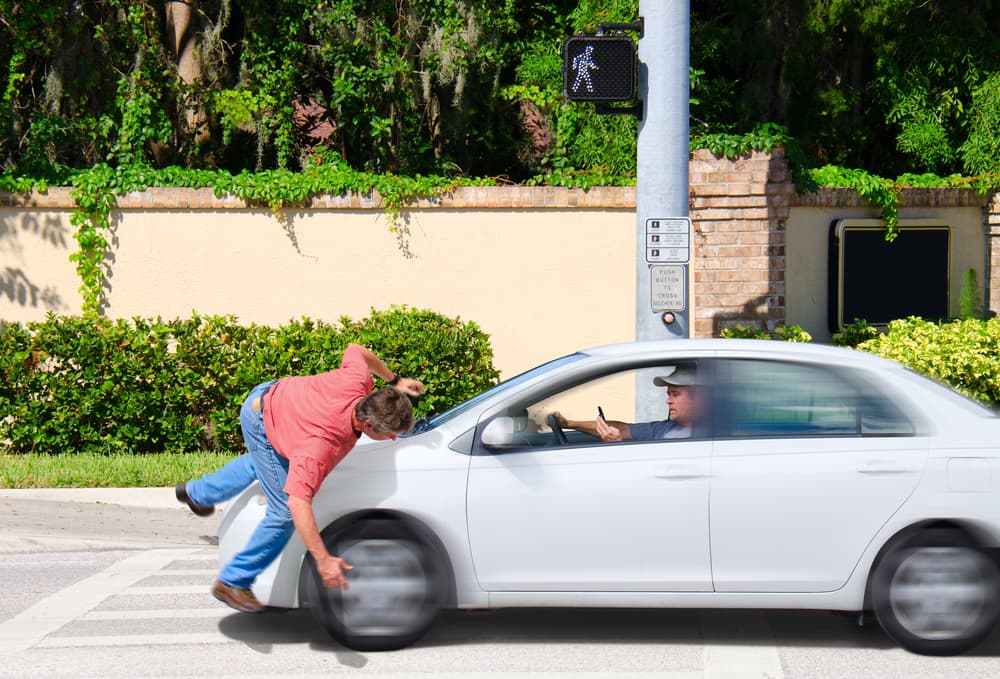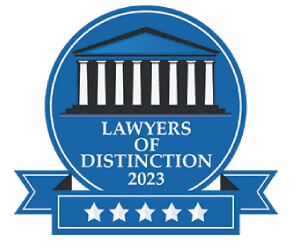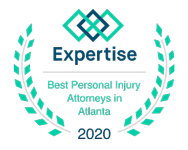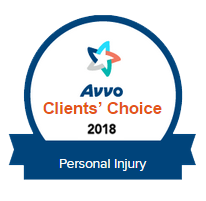Becoming involved in a motor vehicle accident, pedestrian accident, premises accident, construction accident, or dog bite incident leads many individuals to feel confused and unsure of the steps they need to take. First, it is essential that victims promptly seek medical treatment for their injuries. Next, they should consult with an experienced personal injury attorney who can investigate their accident circumstances promptly and explore their legal options.
A knowledgeable Atlanta car accident lawyer can guide you through the legal process while you focus your attention on getting better. After you complete your medical treatment, your lawyer can file a personal injury claim with the at-fault party's insurance company and begin pursuing the financial compensation you deserve for your losses.
Schedule a Free Initial Consultation Today!
Types of Accidents That Directly Result from Others' Negligence
Personal injury claims and lawsuits typically arise from accidents resulting from the negligence of another party. Consider the familiar scenario of a car accident, where a driver's recklessness or failure to adhere to traffic rules leads to collisions, injuries, and, consequently, a basis for a personal injury claim. The dynamics of these accidents often involve a clear breach of the duty to operate a vehicle safely, providing a foundation for legal action.

Moreover, truck accidents involving large commercial vehicles, like big rigs, tractor-trailers, and 18-wheelers, can happen when truck drivers operate their vehicles recklessly, carelessly, or while under the influence of alcohol. These accidents may also occur when truck drivers and trucking companies violate state and federal motor carrier regulations, such as by failing to properly secure truck cargo, failing to properly load or unload cargo onto the truck, or violating weight limits.
Similarly, slip and falls and other premises incidents can be precursors to personal injury claims. Property owners are responsible for maintaining safe premises. When negligence results in hazardous conditions, such as wet floors without proper warning signage, and someone sustains injuries due to a slip and fall, this sets the stage for a legal case.
Dog bites, too, fall under the purview of personal injury claims. Owners have a duty to control and restrain their pets. When they neglect this responsibility, and a dog bite occurs, causing physical and emotional harm, this becomes a basis for a personal injury lawsuit, emphasizing that negligence in pet ownership can lead to legal consequences.
Similarly, when motor vehicle operators drive irresponsibly near traffic intersections or in parking lots and parking garages, they may fail to notice a pedestrian in the vicinity. When the force of a collision causes a pedestrian to fall to the ground, they may suffer debilitating and sometimes permanent injuries.
Construction accidents represent another distinct avenue for personal injury claims. When negligence in maintaining a safe work environment results in injuries to construction workers, the legal system provides recourse for seeking compensation. These accidents often involve lapses in safety protocols, inadequate training, or failure to adhere to industry standards.
Understanding that personal injury claims arise from various accidents, each rooted in negligence, highlights the diverse nature of this type of case. From car accidents to slip and falls, the common thread is the negligence of another party, laying the groundwork for pursuing justice through a personal injury claim or lawsuit.
Injuries That Accident Victims May Suffer Due to Negligence
In the aftermath of motor vehicle accidents, victims can sustain an array of injuries that vary widely. Whiplash, a common consequence of sudden deceleration, often leaves victims grappling with neck pain, stiffness, and headaches. More severe collisions can lead to fractures, ranging from broken bones in extremities to more critical injuries like rib fractures or spinal fractures. Internal injuries, such as organ damage or internal bleeding, are also common and can exacerbate the overall effect on a victim's health.

Pedestrian accidents, a perilous outcome of negligence on the road, expose individuals to a heightened risk of injuries. Impact with a vehicle may result in fractures, particularly to the limbs, as well as head injuries such as concussions or traumatic brain injuries. Soft tissue injuries, like sprains or strains, can also occur, leaving pedestrians with lingering pain and impaired mobility.
Dog bite cases, often arising from an owner's negligence in restraining or training their pet, encompass a range of potential injuries. Puncture wounds and lacerations are common, requiring medical attention and, in severe cases, even surgery. Beyond the physical harm, victims may suffer emotional distress and, in instances of long-term damage, endure ongoing psychological repercussions.
In the realm of construction accidents, where negligence in maintaining a safe work environment can lead to severe consequences, injuries are diverse. Falls from heights are a prevalent risk, resulting in fractures, spinal injuries, or even fatalities. Accidents involving heavy machinery can cause crush injuries, leading to severe trauma, amputations, or permanent disabilities. Exposure to hazardous substances, a consequence of inadequate safety measures, may result in respiratory problems, chemical burns, or long-term health issues.
Each of these scenarios underscores the range of injuries that can befall victims due to someone else's negligence. From the physical toll of motor vehicle accidents and pedestrian incidents to the traumatic consequences of dog bites and the multifaceted injuries stemming from construction accidents, the consequences extend beyond immediate physical harm. It encompasses a spectrum of physical, emotional, and sometimes lasting repercussions that emphasize the need for accountability in cases of negligence.
Successfully Proving the Elements of a Negligence Claim
In navigating a personal injury claim, establishing a compelling case involves cohesively demonstrating key elements — duty, breach, causation, and damage.
- Duty — The duty of care, often inherent in various situations, signifies the responsibility one party holds towards another to prevent foreseeable harm. Articulating this duty lays the groundwork for establishing a baseline for measuring the subsequent elements.
- Breach of Duty — Next, proving a breach of duty becomes pivotal. This requires highlighting how the responsible party failed to uphold the expected standard of care. Whether it is a driver ignoring traffic signals, a property owner neglecting maintenance or a medical professional deviating from established medical practices, this breach serves as the linchpin of the personal injury claim.
- Causation — Causation, the connection between the breach of duty and the ensuing harm, forms the next crucial link. Establishing that the at-fault party’s negligent actions directly led to the victim’s injuries is imperative. Whether it is demonstrating that a car accident resulted from a driver’s running a red light or proving that a slip-and-fall injury occurred due to negligent premises maintenance, the causal link solidifies the connection between the breach of duty and the harm inflicted.
- Damage — Finally, proving damage requires identifying the tangible consequences of the negligence. This extends beyond physical injuries to encompass emotional distress, financial burdens, and any other adverse effects the claimant has sustained. Providing a comprehensive view of the damages underscores the effect of the negligent actions on the claimant's well-being, strengthening the overall case.
Successfully navigating the personal injury claim hinges on weaving these elements into a cohesive narrative. By articulating the duty of care owed, highlighting the breach of that duty, establishing a clear causal connection, and delineating the extent of the damages suffered, the claim gains substance and validity. Each element serves as a building block, reinforcing the foundation of the case and creating a compelling argument for the at-fault party’s accountability for the injuries their negligence caused.
Important Steps to Take After Suffering Injuries in an Accident
Following injuries sustained in an accident resulting from another party’s negligence, accident victims face a crucial period where strategic actions can significantly affect their well-being and potential legal recourse. Beyond seeking immediate medical treatment, victims should prioritize documenting the scene of the incident. This includes taking photographs of the accident site, any visible injuries, and any relevant details such as skid marks, traffic signals, or hazardous conditions. Such documentation serves as valuable evidence that can bolster the victim's case in the event of legal proceedings.
Obtaining contact information from witnesses also becomes vital. Eyewitness accounts can provide invaluable support in establishing the sequence of events and clarifying the negligence of the responsible party. Collecting names and contact information from anyone who saw the accident occur can be crucial for building a comprehensive case.
Promptly reporting the incident to law enforcement is another critical step. A police report not only provides an official record of the accident but often includes details from the officer's investigation. This document becomes instrumental in establishing the facts surrounding the negligence that led to the injuries.
Seeking a comprehensive medical evaluation, even if injuries seem minor at first, is essential. Injuries may not manifest immediately, and a thorough examination can uncover hidden or latent issues. Furthermore, obtaining medical records and documentation of treatment plans becomes crucial for linking injuries directly to the accident and strengthening the victim's case.
Preserving any evidence related to the accident is also imperative. This includes retaining damaged property, such as a vehicle in a motor vehicle accident, or keeping torn clothing as evidence. Preserving this evidence can help establish the severity of the accident and contribute to the overall narrative of the case.
Maintaining a detailed record of all expenses related to the accident, including medical bills, rehabilitation costs, and lost income, is essential. This documentation becomes integral in calculating the full extent of damages and seeking appropriate compensation.
Engaging the services of an experienced personal injury attorney early in the process is another pivotal step. Legal professionals can guide victims through the complexities of the legal system by collecting the necessary documentation and meeting all deadlines for submitting documents relative to the case. They play a crucial role in negotiating with insurance companies and representing the victim's interests in legal proceedings.
By taking these steps, accident victims not only safeguard their immediate well-being but also lay the groundwork for a robust legal case. Acting promptly and systematically can significantly enhance the likelihood of obtaining fair compensation for injuries sustained due to someone else's negligence.
Recovering Damages for Your Accident-related Injuries
When individuals pursue compensation in a personal injury claim arising from another party's negligence, they seek a diverse range of damages that mirror the comprehensive results of their injuries. Among these, non-economic damages represent a crucial category. These damages address the intangible toll of the injuries on the victim's life. Pain and suffering, a primary component of non-economic damages, refers to the physical and emotional distress that the victim has experienced. It acknowledges the enduring effects of the accident, encompassing both the immediate anguish and the long-term implications on the individual's overall well-being and quality of life.

Similarly, loss of consortium is another facet of non-economic damages. This addresses the strain on the victim's relationships and familial connections. Spouses or family members seek compensation for the tangible loss of companionship and support and the overall disruption to their relationships that their loved one’s injuries have caused.
Economic damages, on the other hand, focus on the quantifiable financial losses directly tied to the accident. Medical expenses form a substantial part of economic damages, encompassing costs associated with immediate treatment, surgeries, rehabilitation, and any future medical interventions required. Additionally, compensation for lost income factors into economic damages, acknowledging the income that the victim cannot earn due to their injuries.
Property damage is another category within economic damages, addressing the tangible financial repercussions on the victim. This involves the cost of repairing or replacing damaged property, such as a vehicle in a car accident. The aim is to restore the victim to the financial position they occupied before the incident occurred, acknowledging the material losses incurred.
In cases where negligence is particularly egregious, the injured party may seek punitive damages. Unlike compensatory damages, which aim to make the victim whole, punitive damages serve a different purpose. They seek to punish the responsible party for their reckless or intentional actions, acting as a deterrent to others who may engage in similar conduct. Courts may grant punitive damages when the negligent behavior is especially reprehensible or when the court wants to send a strong societal message about unacceptable conduct.
These distinct types of damages, spanning non-economic, economic, and punitive categories, strive to address the multidimensional consequences of injuries that someone else's negligence has caused. By recognizing both tangible and intangible losses, the legal system endeavors to provide a comprehensive means of redress for victims seeking justice and recovery.
Contact an Experienced Personal Injury Lawyer in Your Area Right Away
In addition to seeking prompt medical treatment after an accident, you need to consult with a personal injury lawyer in your area as quickly as possible. In most cases, accident victims have two years, starting on their accident date, to file a personal injury lawsuit in the court system. If they miss the deadline, they forever waive their right to recover the damages they deserve.
A knowledgeable personal injury attorney can file a timely claim or lawsuit on your behalf as soon as you retain them for legal representation. Your attorney can manage every step of the process for you, from negotiating with insurance company adjusters to officially litigating your case through the state court system.




























